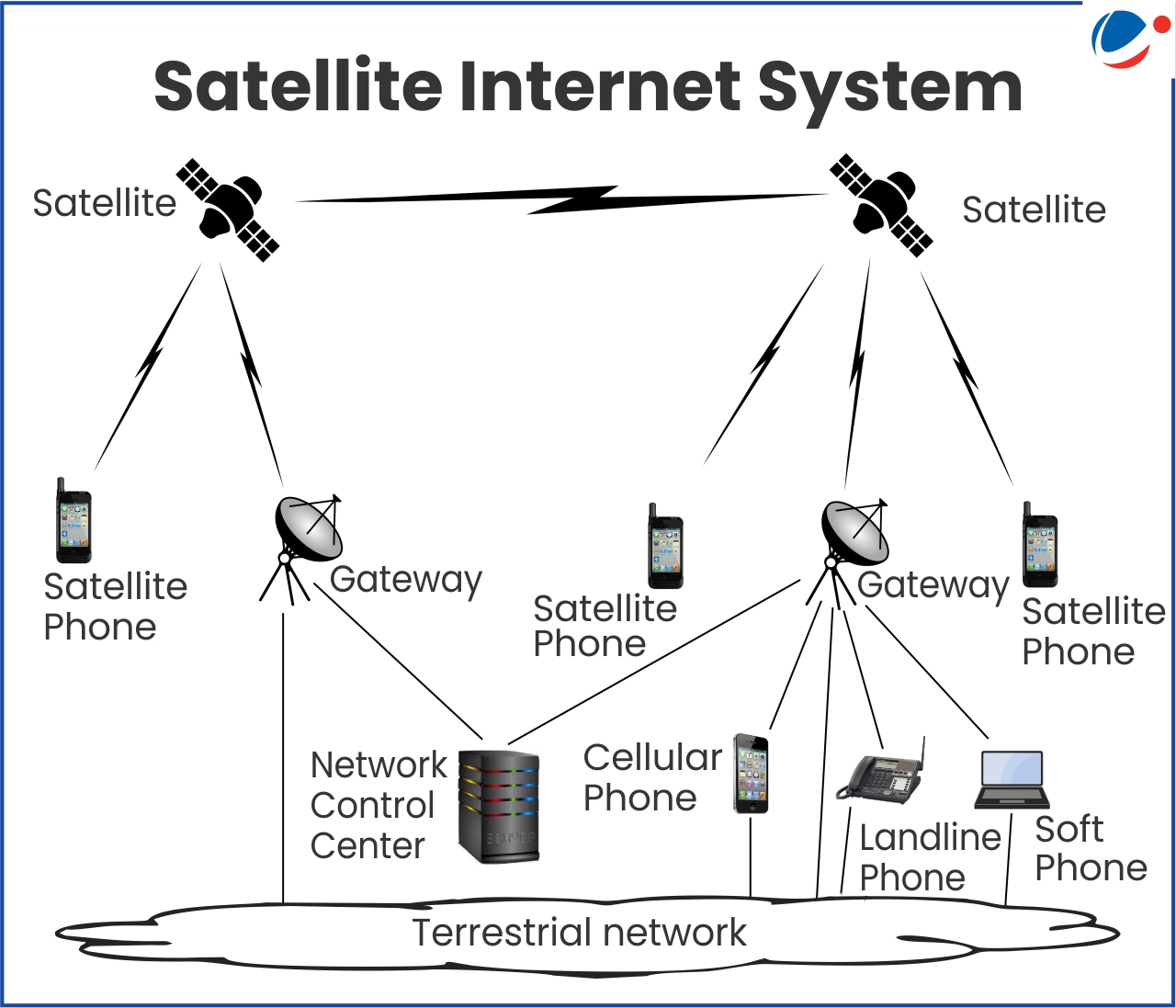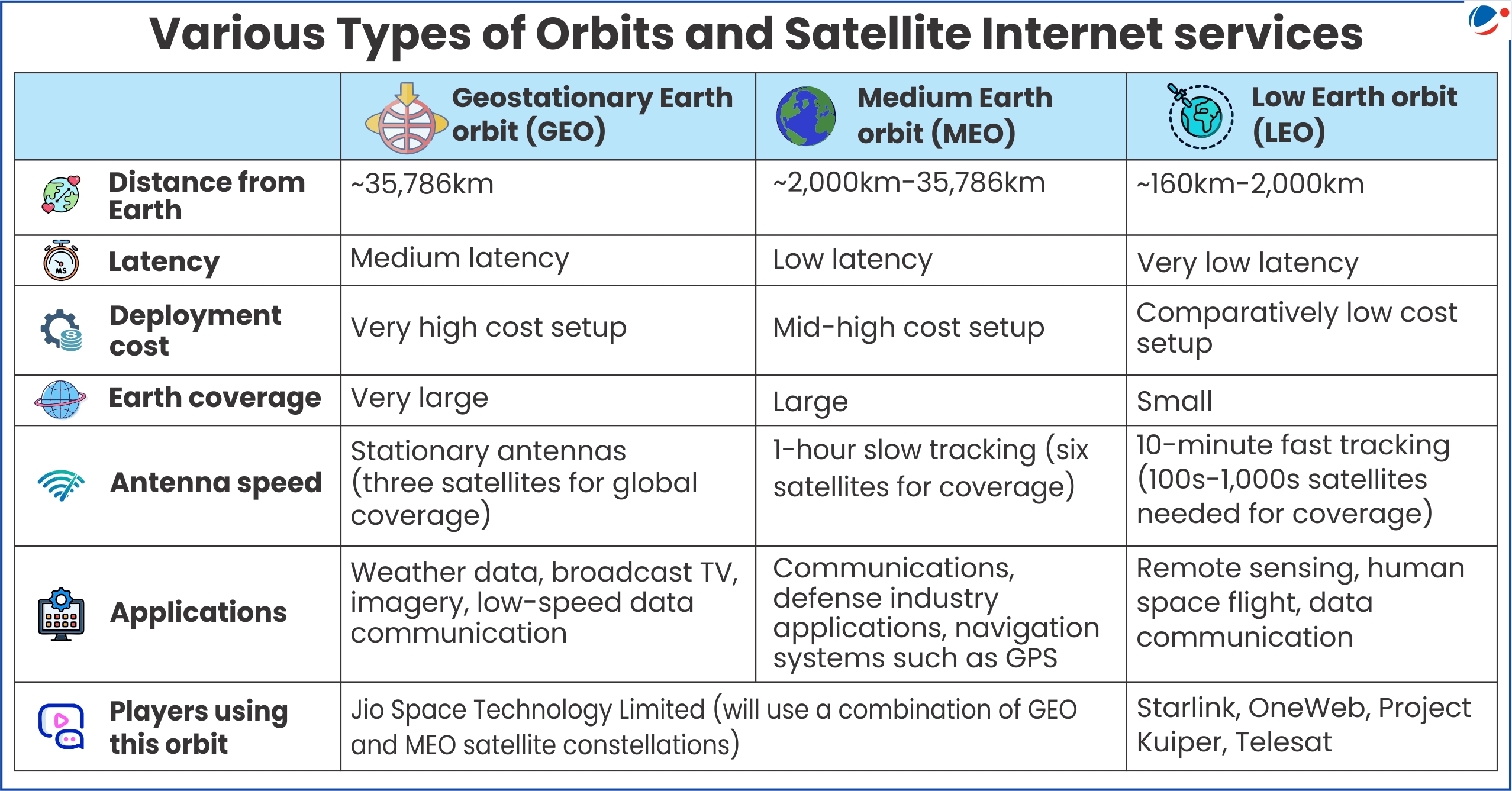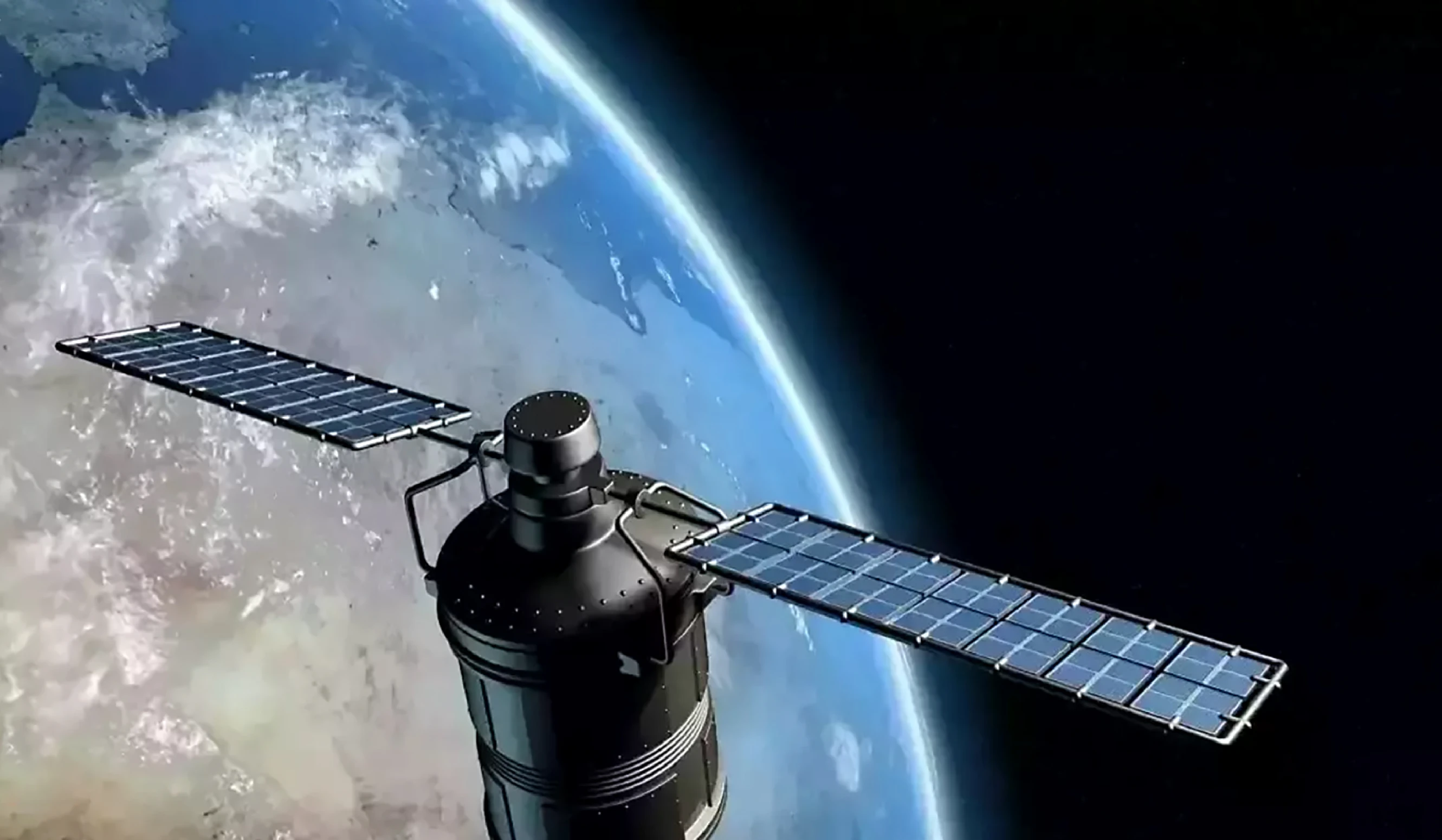Why in the News?
Indian telecom companies Airtel and Jio signed a deal with SpaceX to bring Starlink's satellite internet services to India.

About Satellite Internet
- Definition: Satellite internet or satellite broadband, is a wireless internet connection provided through communication satellites orbiting the Earth.
- Difference: Unlike land-based internet services such as fiber, cable, or DSL, it doesn't rely on wires to transmit data.
- Infrastructure: Satellite internet system architecture generally includes three segments:
- Space Segment: It is mainly a constellation system composed of several communication satellites, which is responsible for receiving and forwarding satellite signals and providing satellite signal coverage to users.
- Satellites can be positioned in various types of orbits based on the demand.
- Ground segment: Includes satellite measurement and control networks, gateway stations, etc., and mainly plays the role of connecting the satellite Internet and ground communication networks.
- User segment: Includes various communication terminals used by users.
- Space Segment: It is mainly a constellation system composed of several communication satellites, which is responsible for receiving and forwarding satellite signals and providing satellite signal coverage to users.

Various prominent Satellite Internet projects in the world
|
Significance of Satellite Internet services
- To bridge the digital divide in remote areas: Suited for unconnected areas or areas with unreliable connectivity.
- Nearly 40% of India's 1.4 billion people still don't have internet access, with rural areas making up most of the cases.
- Connectivity during Disaster: Can be used at a temporary location like a construction site or emergency shelter during disaster, or on moving objects like aircraft, ships, trains, and more.
- Useful in digital economy: E.g. Use in development of platform economies, electronic consumption, digital trade, and digital infrastructure.
- Strategic autonomy: Satellites are less prone to accidental cuts, and geopolitical tensions.
- Military Conflicts: E.g. Use of Starlink Services in Russia–Ukraine conflict.
Issues about Satellite Internet services
- Concerns for internal security: In the wake of the Pahalgam attack, NIA suspect that terrorist may have used satellite phones to contact each other and their bases in Pakistan.
- Issues of Data Privacy and Digital sovereignty: Which data is being collected, how is it stored and who has access rights?
- Lack of effective control: Private players led borderless global network and information space by this system presented disruptive challenges to regulatory ecosystem.
- Monopolistic Tendencies: SpaceX, with its extensive satellite network, risks forming a monopolistic market structure.
- Satellite Latency: Satellite internet typically has higher latency compared to traditional wired connections due to the distance data must travel to and from the satellite.
- However, Low Earth Orbit (LEO) systems like Starlink aim to reduce this latency, achieving speeds in the 25-50 millisecond range.
- Atmospheric changes: Aluminum in satellites produces aluminum oxide, also known as alumina, during burn-up. Alumina is known to cause ozone depletion and could alter atmosphere's ability to reflect heat.
- Licensing and Spectrum Pricing: Complex negotiations and inter-ministerial consultations are required for the VSAT license.
- Spectrum pricing and conditions, especially for Ku and Ka bands, are under negotiation.
- Other Issues: Weather can affect Satellite internet, High cost associated with its deployment and operation, Increase in space junk, Astronomical Interference etc.
Way forward
- Pilot programs: Like in remote areas, such as oil fields or desert communities, can demonstrate feasibility and build public confidence.
- Comprehensive regulatory frameworks: India must establish clear policies for licensing, data governance, and spectrum allocation.
- Collaborating with private operators: Incentives such as tax breaks and grants will encourage private players and ensure alignment with both national security objectives and broader economic goals.
- Hybrid models: To maximize efficiency, hybrid models combining satellite and terrestrial networks can be used.
- Other way forwards: Prioritize integrating rural and remote areas, Stronger regional and diplomatic initiatives etc.
Related News:Department of Telecommunications (DoT) issued security instructions through amendments to the Unified License (UL) for the Global Mobile Personal Communications by Satellite (GMPCS) authorization, for satellite internet services. Key Security Instructions through amendments
|





